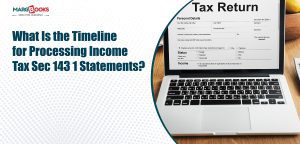The main Section 194LBB of the Income Tax Act is important if you’re earning income from investment funds, like an AIF (Alternative Investment Fund). This section tells us how tax is to be deducted from income paid to unit holders. It’s a bit technical as we’ll simplify everything with examples.
Whether you’re a CA, a partnership firm, or a business investor, this guide will help you calculate TDS correctly. Many Indian professionals now use the software MargBooks to stay updated and automate these deductions easily.
What is Section 194LBB of the Income Tax Act and Who Needs to Care?
Section 194LBB of the Income Tax Act deals with TDS (Tax Deducted at Source) on income paid by an investment fund (Category I or II AIFs) to its unit holders. Those needs are as follows:
- If you’re an investment fund, you must deduct TDS before distributing income to unit holders (except income exempt under Section 10).
- If you’re a unit holder (such as a company, firm, or individual investor), TDS will be deducted from the income you receive.
- This applies only if the investment fund is not taxed on that income itself (i.e., pass-through status applies).
Real-world Example:
Let’s say an AIF in Mumbai distributes ₹10 lakh of income among five investors. Each one gets ₹2 lakh. Before paying, the fund has to deduct TDS based on the investor’s status (individual, company, etc.).
Our online billing software is used by many CAs working with such funds to keep these records straight and auto-calculate TDS as per investor type.
TDS Rates under Section 194LBB of the Income Tax Act
The TDS rates vary depending on who receives the income:
- Resident Individual or HUF: 10%
- Company, Partnership Firm, LLP (resident): 30%
- Non-resident investors (including NRIs): As per rates in force under Section 195 (with applicable surcharge and cess)
If PAN is not available, TDS will be deducted at 20% (as per Section 206AA).
Another Real-World Scenario:
A Bangalore-based partnership firm receives ₹5 lakh from a Category II AIF. The AIF must deduct 30% TDS, i.e., ₹1.5 lakh, before making the payment. The firm can later claim this while filing its return. Platforms such as MargBooks help automate this reporting and link directly with online filing systems.
How to Calculate TDS under Section 194LBB of the Income Tax Act?
To calculate TDS, follow these simple steps:
- Identify the nature of the recipient: individual, firm, company, or non-resident
- Check PAN availability, a higher rate of 20% applies
- Determine TDS rate as per the recipient category
- Calculate gross income to be distributed
- Apply the relevant TDS rate to the distributed income
- Deduct TDS before payment
- Deposit TDS with the government within the due dates
- File TDS return (Form 26Q/27Q)
With our online invoice software, all of this can be auto-computed by simply selecting the investor type and inputting the income details. It ensures no manual errors and keeps you audit-ready.
Compliance Rules for Fund Managers and Accountants
If you’re managing or auditing an AIF or LLP, here’s what you need to ensure:
- TAN (Tax Deduction Account Number) is mandatory.
- TDS must be deposited by the 7th of the following month.
- TDS returns (Form 26Q/27Q) must be filed quarterly.
- TDS certificates (Form 16A) must be issued to unit holders.
Why Accountants and Firms Trust MargBooks?
Here are a few reasons why professionals prefer MargBooks:
- It helps Indian investment funds auto-calculate TDS as per each investor’s tax status.
- It generates all the entries and TDS deductions together.
- CAs and accountants use it to sync reports with e-filing portals.
- Small LLPs and firms use it to manage all payables with TDS compliance.
Using our online billing software makes this part smooth. It handles TDS auto-deductions during payout entries and generates return-ready files.
Conclusion
If you’re involved in fund distribution, investment management, or receive income from AIFs, understanding Section 194LBB of the Income Tax Act is crucial. The TDS rules may seem complicated, but with a step-by-step approach and system, MargBooks, the whole process becomes manageable.
Whether you’re a chartered accountant, business owner, or investor, proper calculation and timely deduction can save you from penalties and ensure smooth compliance. Want to stay on top of your TDS game? You can learn the law, automate with our software, and use the right tools to simplify compliance under Section 194LBB of the Income Tax Act.




